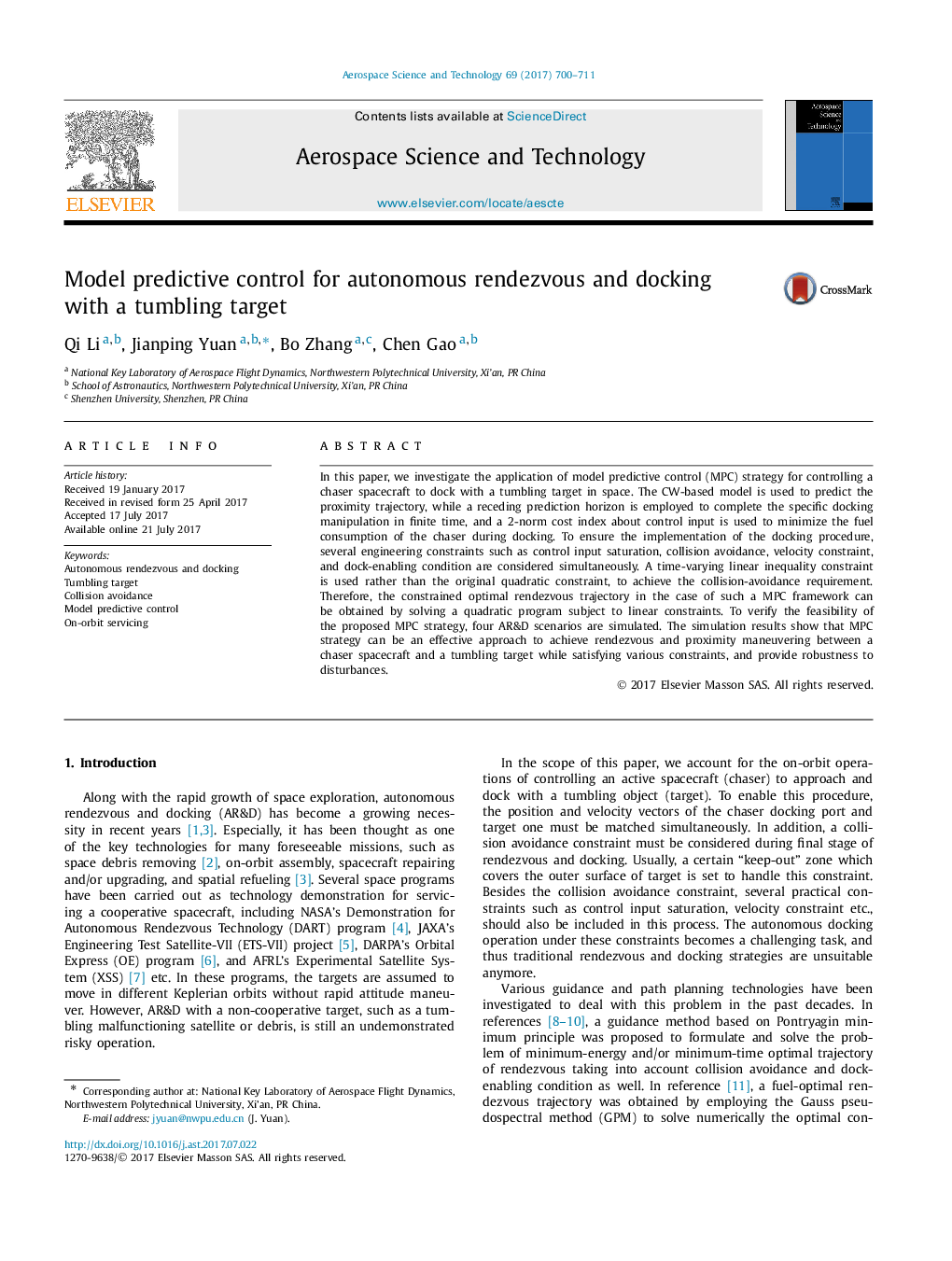| Article ID | Journal | Published Year | Pages | File Type |
|---|---|---|---|---|
| 5472778 | Aerospace Science and Technology | 2017 | 12 Pages |
In this paper, we investigate the application of model predictive control (MPC) strategy for controlling a chaser spacecraft to dock with a tumbling target in space. The CW-based model is used to predict the proximity trajectory, while a receding prediction horizon is employed to complete the specific docking manipulation in finite time, and a 2-norm cost index about control input is used to minimize the fuel consumption of the chaser during docking. To ensure the implementation of the docking procedure, several engineering constraints such as control input saturation, collision avoidance, velocity constraint, and dock-enabling condition are considered simultaneously. A time-varying linear inequality constraint is used rather than the original quadratic constraint, to achieve the collision-avoidance requirement. Therefore, the constrained optimal rendezvous trajectory in the case of such a MPC framework can be obtained by solving a quadratic program subject to linear constraints. To verify the feasibility of the proposed MPC strategy, four AR&D scenarios are simulated. The simulation results show that MPC strategy can be an effective approach to achieve rendezvous and proximity maneuvering between a chaser spacecraft and a tumbling target while satisfying various constraints, and provide robustness to disturbances.
